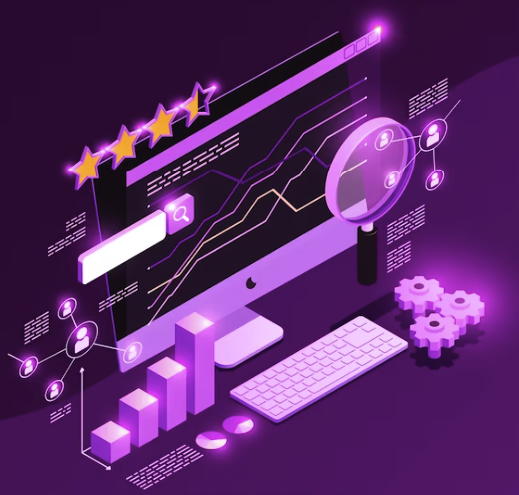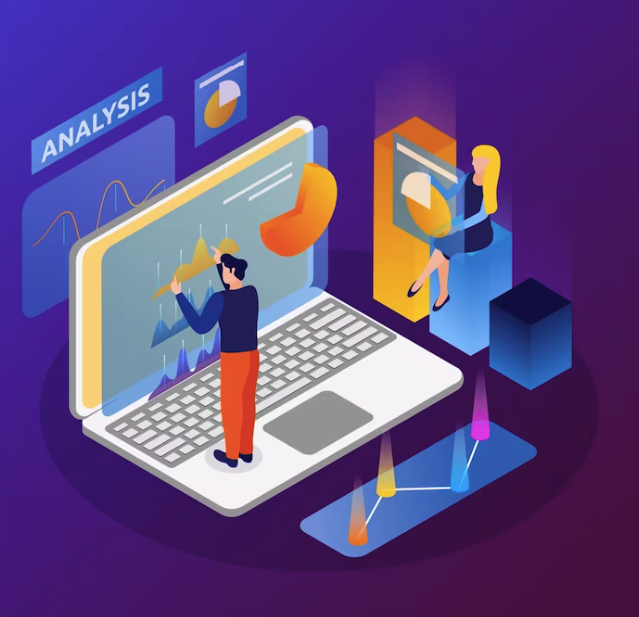Mastering Website Analytics: Tracking Traffic and User Behavior

Website Analytics and Monitoring: Tools for Tracking Traffic and User Behavior
Website analytics and monitoring tools are critical for analysing and optimising your website’s performance. These tools give useful information on your website’s traffic sources, user behaviour, conversion rates, and engagement metrics. By recording and analysing this data, you can make educated decisions to improve the performance of your website, improve the user experience, and meet your business objectives. There are several solutions available to meet your individual needs and goals, ranging from mainstream programmes like Google Analytics to alternative analytics systems.
Understanding the Importance of Website Analytics and Monitoring
Website analytics and monitoring are critical for acquiring in-depth understanding of how your website performs and how visitors interact with it. They enable you to track and measure critical data like website traffic, bounce rate, average session time, and conversion rates. Understanding these indicators allows you to discover areas for development, optimise the content and design of your website, and produce greater outcomes. Website analytics may also give you with useful information about your target audience, such as demographics, interests, and behaviour patterns. This insight helps you to customise your marketing strategy, content, and user experience to better meet the wants and preferences of your target audience.
How Website Analytics Enhances Performance and User Experience
By offering insights into user behaviour and preferences, website analytics may assist improve performance and user experience. You can detect which portions of your website are functioning well and which may require improvement by analysing user interactions and engagement data such as page visits, click-through rates, and time on page. This information assists you in optimising the navigation, content placement, and calls to action on your website, resulting in a more intuitive and user-friendly experience. Furthermore, website analytics may reveal possible concerns, such as high bounce rates or poor conversion rates, allowing you to solve them quickly and enhance the overall performance of your website.
Key Metrics to Track for Art Style Websites
Some critical metrics to monitor for art style websites are traffic sources, user interaction, and conversion rates. Tracking traffic sources allows you to learn how people find your website, whether through organic search, social media, referrals, or direct visits. User engagement indicators, such as average session time and page views per session, show how thoroughly visitors are researching and engaging with your content. Conversion rates, such as the amount of enquiries, email sign-ups, or purchases, give information about your website’s efficacy in generating desired activities. By monitoring and analysing these indicators, you can improve your marketing techniques, improve the performance of your website, and reach your goals as an art style website.

Google Analytics: The Cornerstone of Website Analytics
Google Analytics is commonly regarded as one of the most effective and all-encompassing website analytics solutions available. It provides a plethora of capabilities and insights that allow you to track, measure, and analyse many elements of the performance of your website. Google Analytics delivers a complete picture of your website’s data, from audience demographics and behaviour to acquisition methods and conversion monitoring. Its easy-to-use interface, configurable reports, and real-time data updates make it an invaluable tool for studying user behaviour, recognising patterns, and making data-driven decisions to optimise the performance of your art style website.
Introduction to Google Analytics and Its Benefits
Google Analytics offers website owners a variety of benefits, including deep insights into website traffic, user behaviour, and conversion metrics. You can track the amount of visitors, their geographical areas, the devices they use, and the pages they visit by including Google Analytics into your art style website. It also lets you set up conversion tracking to track particular activities like form submissions or product purchases. You may use Google Analytics to obtain a better knowledge of your audience, find high-performing sites, and track the effectiveness of your marketing activities. Its data visualisation tools and customisable reports enable you to meaningfully visualise and analyse data, allowing you to make data-driven choices and optimise your website for improved performance.
Setting Up Google Analytics for Your Art Style Website
A few basic actions are required to set up Google Analytics for your art style website. To begin, sign up for a free Google Analytics account on the Google Analytics website. Once you’ve created an account, you’ll be given a tracking code to enter into the HTML code of your website. Google Analytics may collect data and track user behaviour on your website using this tracking code. You may add the code to each page manually or use a website builder or content management system that has Google Analytics integration. Once you’ve included the tracking code, Google Analytics will begin collecting data, and you’ll be able to view the insights and reports through your Google Analytics account.

Exploring Alternative Analytics Tools
While Google Analytics is a popular option for website analytics, there are other analytics solutions that provide distinct features and functionality. These alternative solutions respond to various requirements and interests, and they can give significant information into the success of your website. Adobe Analytics, Matomo, and Mixpanel are some significant alternative analytics solutions. These technologies include extensive segmentation, real-time tracking, A/B testing, and user behaviour monitoring, among other capabilities. By investigating these alternatives, you can identify the analytics solution that best meets your needs and gives the knowledge you want to optimise your art style website.
Overview of Other Web Analytics Platforms and Their Features
Alternative web analytics tools go beyond what Google Analytics gives in terms of features and capabilities. Adobe Analytics, for example, is well-known for its comprehensive data segmentation and visualisation capabilities, which allow for in-depth insights into user behaviour. Matomo (previously Piwik) is an open-source analytics platform that includes data ownership and privacy safeguards, making it a popular alternative for data security concerns. Mixpanel is an event-based monitoring company that allows you to track and analyse particular user activities and behaviours. Each of these alternative analytics platforms has its own set of capabilities and features, allowing you to analyse and understand your website data in a variety of ways.
Comparing Features and Pricing of Alternative Analytics Tools
When evaluating various analytics solutions, assess their features, cost, and fit for your unique requirements. Some solutions include additional capabilities like as heat maps, funnel analysis, and user flow visualisation, which can provide more information about user behaviour and website performance. It’s also vital to analyse these tools’ scalability and price structure, since certain systems may have subscription levels based on data volume or the number of tracked websites. Furthermore, reviewing customer evaluations and soliciting advice from other website owners will assist you in understanding the user experiences and satisfaction levels linked with various analytics solutions. You may make an informed selection on the alternative analytics platform that most corresponds with your work by evaluating features, cost, and user comments.